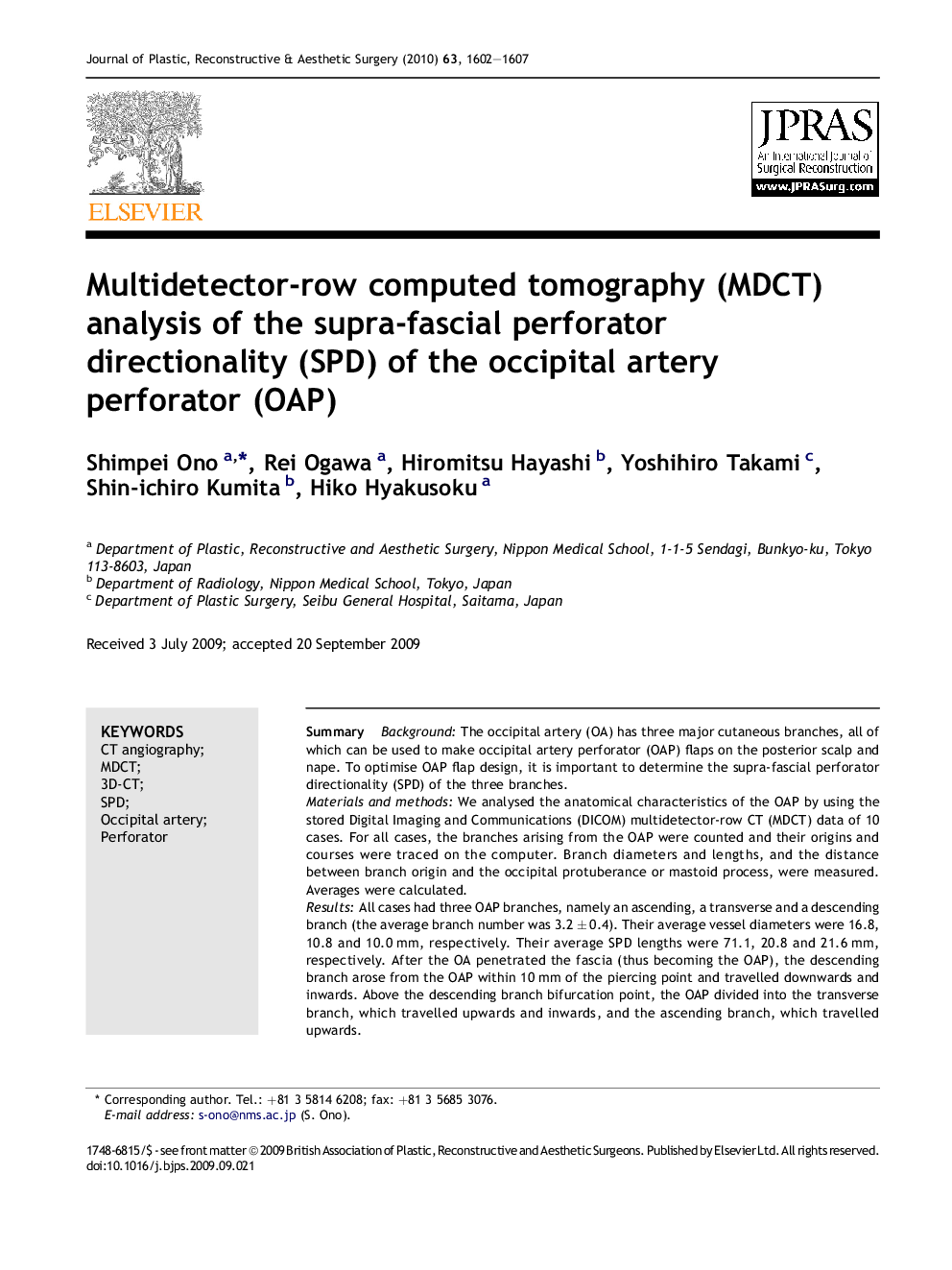| Article ID | Journal | Published Year | Pages | File Type |
|---|---|---|---|---|
| 4119714 | Journal of Plastic, Reconstructive & Aesthetic Surgery | 2010 | 6 Pages |
SummaryBackgroundThe occipital artery (OA) has three major cutaneous branches, all of which can be used to make occipital artery perforator (OAP) flaps on the posterior scalp and nape. To optimise OAP flap design, it is important to determine the supra-fascial perforator directionality (SPD) of the three branches.Materials and methodsWe analysed the anatomical characteristics of the OAP by using the stored Digital Imaging and Communications (DICOM) multidetector-row CT (MDCT) data of 10 cases. For all cases, the branches arising from the OAP were counted and their origins and courses were traced on the computer. Branch diameters and lengths, and the distance between branch origin and the occipital protuberance or mastoid process, were measured. Averages were calculated.ResultsAll cases had three OAP branches, namely an ascending, a transverse and a descending branch (the average branch number was 3.2 ± 0.4). Their average vessel diameters were 16.8, 10.8 and 10.0 mm, respectively. Their average SPD lengths were 71.1, 20.8 and 21.6 mm, respectively. After the OA penetrated the fascia (thus becoming the OAP), the descending branch arose from the OAP within 10 mm of the piercing point and travelled downwards and inwards. Above the descending branch bifurcation point, the OAP divided into the transverse branch, which travelled upwards and inwards, and the ascending branch, which travelled upwards.ConclusionsThe OAP has three branches, all of which can be reliable vascular pedicles for scalp and nape skin flaps. Knowing the SPD of each branch is important for designing flap shape.
